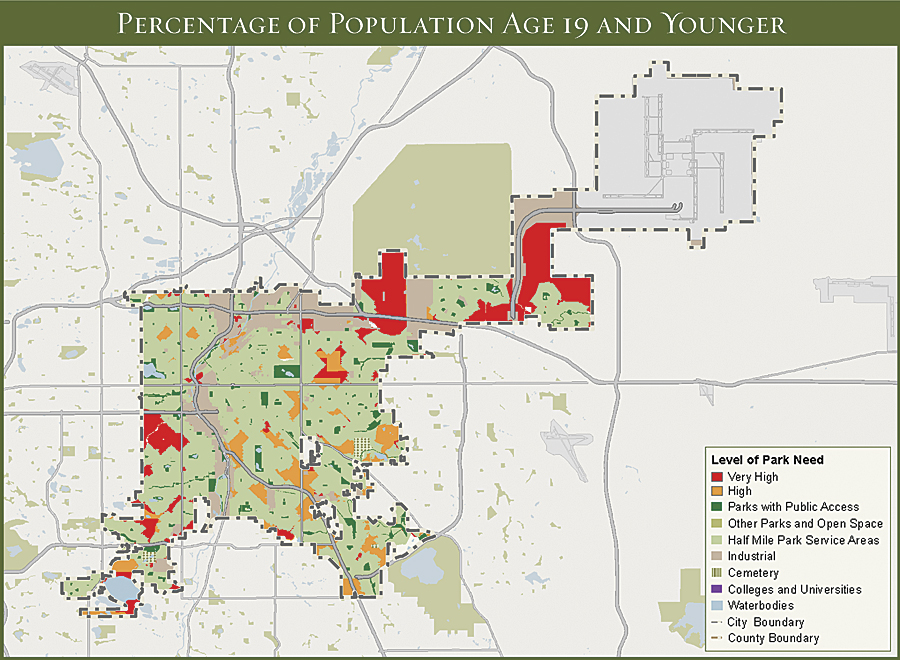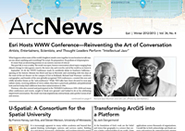Compare Parks and Determine Accessibility
The 40 largest cities in the United States each have their own character and personality. But one thing that they all have in common is the need for a great park system. Some cities are well on their way to achieving this goal, but others have a great deal of work to do.
Parks are important to communities because nearby opportunities to exercise and experience nature are essential for physical and mental well-being. Studies show that parks can encourage physical activity, revitalize local economies, and help bring neighborhoods together.

This is why the Trust for Public Land ParkScore Project was developed. ParkScore is the most comprehensive park rating system ever developed and measures, on a scale of 0 to 100, how well cities are meeting the need for parks. The ParkScore website, ParkScore.TPL.org, is free and fully accessible to all. The goal is to empower communities to put more parks on the ground.
ParkScore serves two categories of users. The first consists of individuals and families. The website provides residents with a quick and easy way of seeing their city’s park system in detail and allows them to compare their city with others across the United States. This will provide users with both a national perspective on their local park access and the tools to advocate for park improvements in their communities.
The second audience for ParkScore is city planners, park managers, and other local leaders. The website allows these users to dig deep into their city’s park system. This helps leaders better serve their residents by providing them with the tools to jump-start local park system improvement plans. On the website, users can view the following:
- A citywide analysis of park access by age and income level
- Detailed information about each city park
- Data and analysis pinpointing where parks are needed most critically and identifying which improvements would provide the greatest benefit to local park systems
This kind of information is exactly what is needed to support comprehensive park system improvement programs.
The ArcGIS mapping technology used for this project identifies which neighborhoods and demographics are underserved by parks and how many people are able to reach a park within a 10-minute walk. The Trust for Public Land selected ArcGIS technology because it provides a robust set of tools and applications for detailed park system analyses and, since it is used by most local governments, allows an easy exchange of information. The ArcGIS platform was also selected because it allowed the creation of walking networks, providing a model for how people walk from their homes and other locations to parks and showing how park access can be increased.
City leaders, such as San Diego mayor Jerry Sanders, are already embracing ParkScore. San Diego’s park system ranked 8th among the 40 largest US cities.

Says Sanders, “In San Diego, our parks system is a source of immense civic pride. From our community parks to our hiking trails to crown jewels like Balboa Park, San Diegans love to enjoy our famous sunshine in our public green spaces. We’re proud that the Trust for Public Land has recognized our parks on a national level. Like all cities, San Diego has experienced tight budgets in recent years, but as we embark on a recovery, I’ve already tapped our parks as one of the first places to reap the benefits of increasing revenues. We hope to keep our parks among America’s best for years to come.”
Officials in Denver, whose park system ranked 13th, feel the same way. Lauri Dannemiller, manager of Denver Parks and Recreation, says, “We are proud to be opening parks in parts of Denver that have not seen new parks in a generation, and like most cities operating with strained resources, it is partnerships with groups like the Trust for Public Land that make this progress possible.”
Joseph Lovell, a senior GIS analyst with Denver Parks and Recreation, says ParkScore’s GIS technology makes it a powerful planning tool for city leaders. He continues, “ParkScore is unique because the GIS analysis didn’t just measure park access by distance but also factored in whether there were barriers to access, such as a river or a highway, that would hinder park usage. In areas where there is limited park access and land acquisition isn’t possible, we’re using the ParkScore results to improve connectivity between citizens and existing parks.”
The website’s ability to offer city leaders a series of solutions and next steps for how to fill the gaps in local park systems that were identified by ParkScore analysis fits in with the Trust for Public Land’s four primary services: analyzing local landscapes and identifying where there are gaps in park access, securing funding for land transactions, executing land transactions, and designing and developing parkland once it has been secured.
“You can’t have a great city without a great park system,” says Christopher Kay, chief operating officer of the Trust for Public Land. “The Trust for Public Land hopes that ParkScore inspires cities to focus on parks, and we’re eager to work with municipal leaders and volunteers to help them build the best park systems imaginable.”
About the Authors
Breece Robertson and Bob Heuer are with the Trust for Public Land. Robertson is the national director of conservation vision and GIS. She joined the organization in 2001 to create a comprehensive, coordinated GIS program. Heuer is the associate GIS director for the Trust for Public Land. He manages the GIS analysis for ParkScore, as well as a variety of other projects.
For more information, contact Breece Robertson, the Trust for Public Land, or visit ParkScore.TPL.org.

